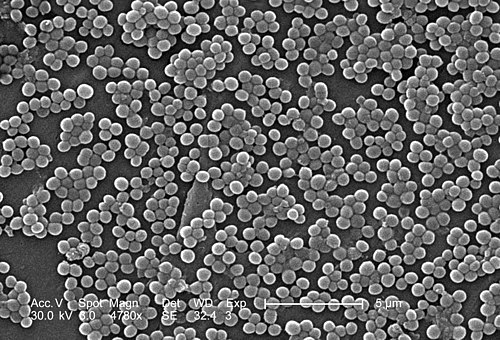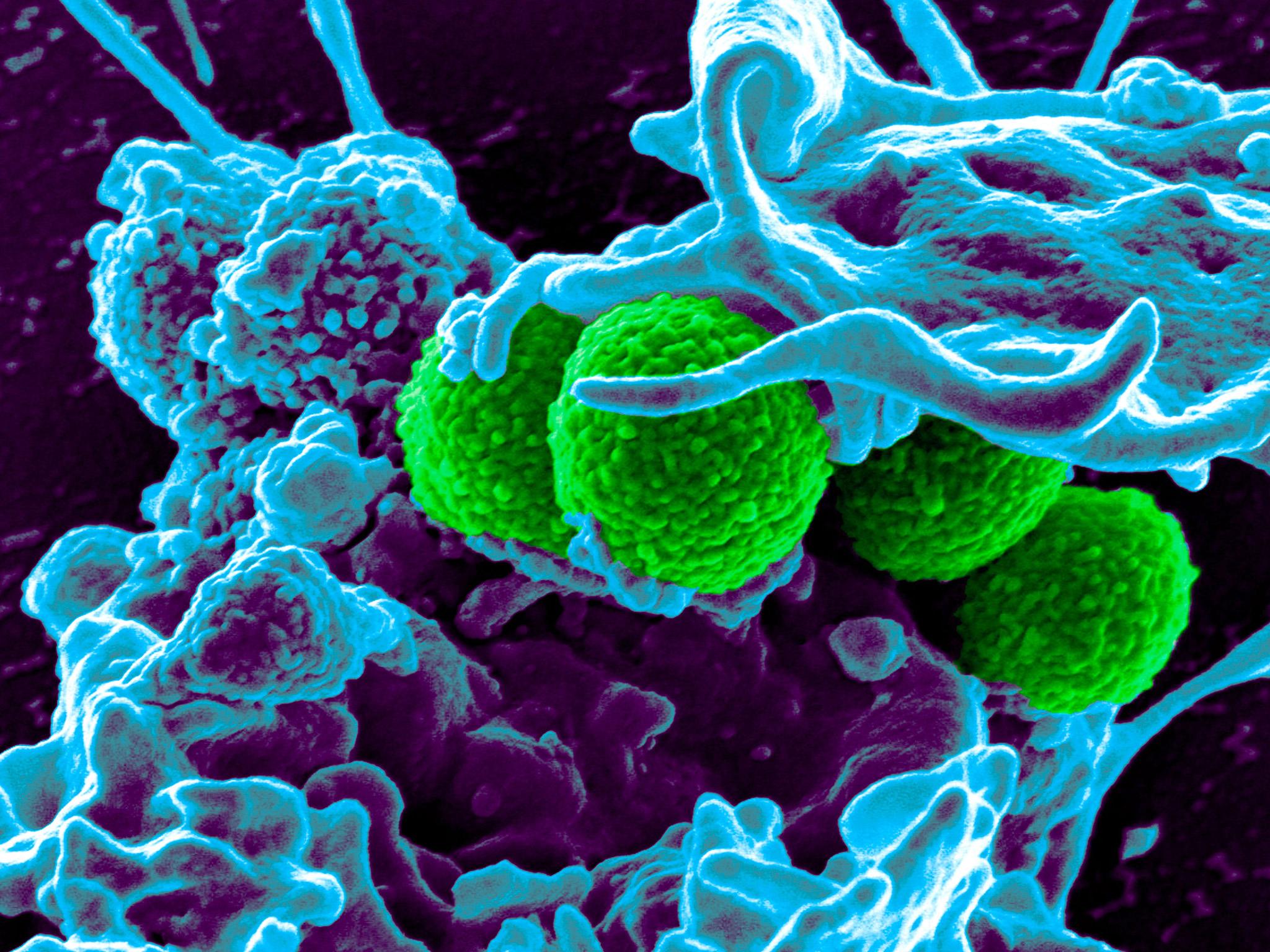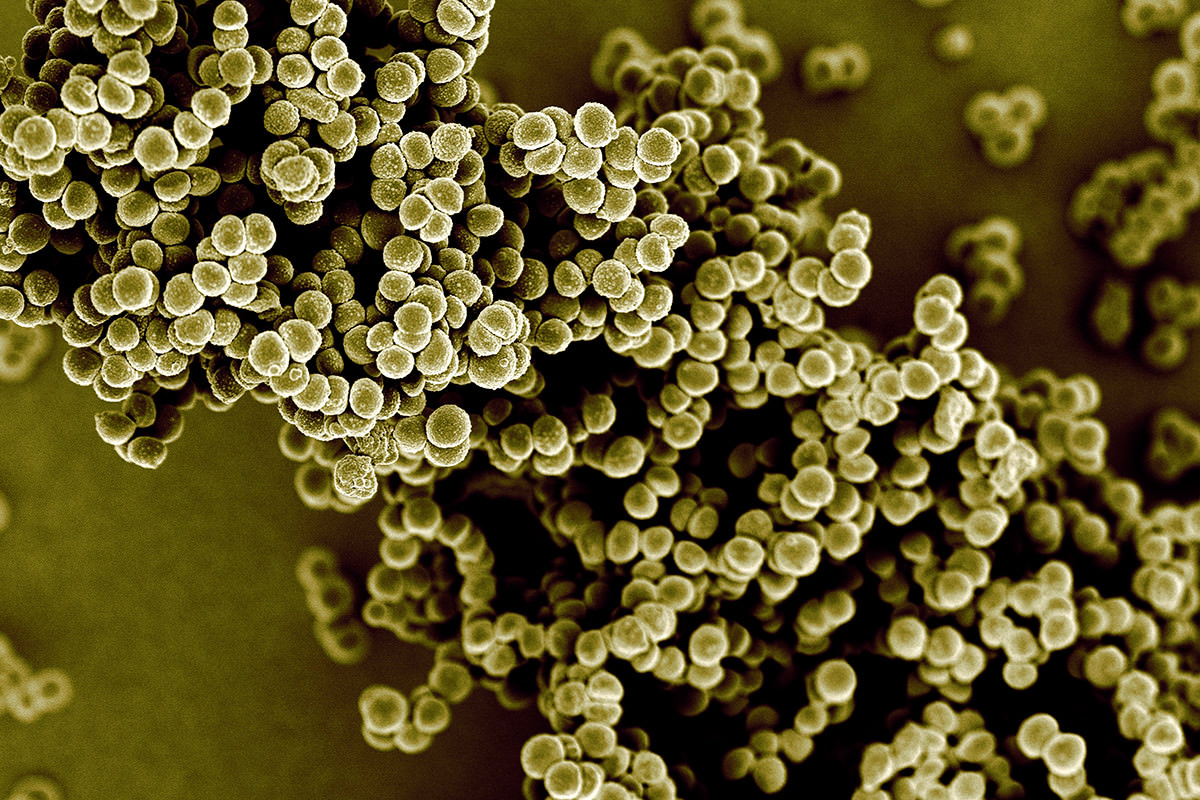Superbugs MRSA: Everything You Need to Know About the Superbug MRSA
What is MRSA? How common is MRSA? What are the signs of MRSA? How is MRSA treated? Explore these and other key questions about the superbug MRSA.
Understanding MRSA: The Superbug Explained
MRSA, or methicillin-resistant Staphylococcus aureus, is a type of staph bacteria that has developed resistance to many common antibiotics. This makes MRSA infections particularly challenging to treat, as the usual antibiotic drugs used for staph infections are no longer effective. MRSA can cause a range of infections, from minor skin issues to life-threatening conditions like bloodstream infections and pneumonia.
Two Main Types of MRSA Infections
There are two primary types of MRSA infections:
- Healthcare-Associated MRSA (HA-MRSA): This type of MRSA is typically seen in healthcare settings, such as hospitals, nursing homes, and dialysis centers. Patients with weakened immune systems or those who have had recent surgery or medical procedures are at higher risk for HA-MRSA.
- Community-Associated MRSA (CA-MRSA): CA-MRSA is spread through skin-to-skin contact or in crowded conditions, and is more commonly seen in settings like schools, athletic teams, and military barracks. People who participate in contact sports, live in crowded conditions, or have poor hygiene are at greater risk for CA-MRSA.

Symptoms and Signs of MRSA Infection
Many people can carry MRSA without showing any symptoms. However, when an infection does occur, the most common signs include:
- A red, pus-filled bump or boil on the skin, which may be mistaken for a spider bite
- Redness, swelling, pain, and warmth around the affected area
- Fever, chills, and other flu-like symptoms, especially in more severe cases
- Chest pain, cough, and difficulty breathing if the infection affects the lungs
- Wounds that do not heal properly
How MRSA Spreads and Who is at Risk
MRSA can be spread through direct contact with an infected wound or by sharing personal items that have come into contact with the bacteria, such as towels, razors, or sports equipment. Those at higher risk for MRSA include:
- People with weakened immune systems, such as the elderly or those recovering from illness or surgery
- Individuals with medical devices like catheters or IV lines, which provide an entry point for the bacteria
- Residents of long-term care facilities, where MRSA can spread easily between patients
- Athletes, military members, and others who participate in activities involving skin-to-skin contact or crowded conditions

Treating MRSA Infections
The treatment for MRSA typically involves:
- Draining any abscesses or infected areas under medical supervision, as attempting to drain the infection yourself can worsen it
- Prescribing antibiotics that are effective against MRSA, which may be taken orally or administered intravenously
- In some cases, applying warm compresses to the affected area to help it drain naturally
It’s crucial to follow the treatment plan prescribed by a healthcare professional, as improper or incomplete treatment can lead to the bacteria becoming even more resistant to antibiotics.
Preventing the Spread of MRSA
To help prevent the spread of MRSA, it’s important to practice good hygiene, such as:
- Regularly washing your hands with soap and water, especially after touching any wounds or potentially contaminated surfaces
- Avoiding sharing personal items like towels, razors, or sports equipment
- Covering any cuts or open wounds to prevent the bacteria from spreading
- Cleaning and disinfecting frequently touched surfaces in your home or workspace
Additionally, healthcare providers play a crucial role in preventing the spread of MRSA within medical facilities by following strict infection control protocols and responsible antibiotic prescribing practices.

The Importance of Addressing MRSA
MRSA is a significant public health concern, as the increasing prevalence of antibiotic-resistant bacteria poses a major challenge to healthcare providers and patients alike. By understanding the risks, symptoms, and prevention strategies for MRSA, individuals and communities can take proactive steps to mitigate the spread of this dangerous superbug.
Everything You Need to Know About the Superbug MRSA
MRSA stands for methicillin-resistant Staphylococcus aureus, a type of staph bacteria that’s resistant to the usual antibiotic drugs used to treat common staph infections.
When bacteria are resistant to antibiotics, there are fewer drugs available to kill them, and there’s a higher risk of developing a serious infection. (1)
You can carry MRSA and not show any signs of infection. But in some cases, MRSA can cause a life-threatening infection, especially if you have a weakened immune system or are in a healthcare setting.
In otherwise healthy people, MRSA can cause skin infections. In hospitals and other healthcare settings, it can lead to more severe infections, including bloodstream infections and pneumonia. (2)
Researchers have blamed the development of MRSA on the overprescribing of antibiotics — including prescribing them for viral infections, such as colds and the flu.
Because they only affect bacteria, antibiotics are useless at treating infections caused by viruses. (3)
(3)
Common Questions: MRSA
What is MRSA?
MRSA stands for methicillin-resistant Staphylococcus aureus (S. aureus), a type of staph bacteria that’s resistant to the usual antibiotics that treat staph infections. This means there are fewer drugs available to kill this bacteria, making it more difficult to treat. There are two types of MRSA infections: healthcare-associated (known as HA-MRSA) and community-associated (CA-MRSA). In general, S. aureus itself is not uncommon — for example, it’s often found in people’s nasal passages and on the skin, and it’s considered part of the skin’s normal flora.
What are the signs of MRSA?
Most people who carry MRSA never develop symptoms. When a CA-MRSA infection occurs, it can cause a red, pus-filled bump on the skin and a fever. HA-MRSA may occur in the bloodstream, heart, lungs, or in the area of a recent surgery. Signs include chest pain, chills, fever, rash, and wounds that won’t heal.
What does a MRSA rash look like?
The first sign of infection is usually a small bump or boil that can be mistaken for a spider bite. The bump and the surrounding skin may become red, swollen, painful, and inflamed (cellulitis). The bump itself may also be warm to the touch and filled with pus.
The bump and the surrounding skin may become red, swollen, painful, and inflamed (cellulitis). The bump itself may also be warm to the touch and filled with pus.
How is MRSA treated?
Treatments for MRSA include having a medical professional drain the abscess, and antibiotics, which may be given orally or intravenously. Do not try to drain an abscess yourself. It’s vital that the procedure is done correctly, using sterile tools, to avoid worsening the infection. If the abscess is small, applying a warm compress to the area might help it drain on its own, but if this does not work, you should seek a medical evaluation.
Types of MRSA
HA-MRSA occurs most often in people who have spent time in a healthcare setting, such as a hospital, nursing home, or dialysis center.
CA-MRSA is spread by skin-to-skin contact or in crowded conditions. High school and college athletes, as well as people who live in dormitories, prisons, and military barracks, are at higher risk for this type of MRSA infection. (3)
(3)
How Common Is MRSA?
An estimated 2 percent of the population carries MRSA, according to the Centers for Disease Control and Prevention (CDC). Most of these people don’t show any signs of infection at a given time.
It’s unknown how common MRSA infections are outside of healthcare settings, according to the CDC.
A CDC study found that serious MRSA infections in hospitals dropped by 54 percent between 2005 and 2011, and there were 9,000 fewer deaths in 2011 than in 2005 as a result of MRSA. However, these declines slowed between 2013 and 2016. (1)
How Is MRSA Spread?
MRSA can spread through contact with an infected wound or by sharing personal items, including towels and razors, that have come into contact with an area of infected skin.
The risk for MRSA infection is greater in any situation that involves skin-to-skin contact or crowded conditions, such as sports, military, and certain school and day care settings. (1)
The risk factors for acquiring a MRSA infection in a healthcare setting (HA-MRSA) are different from those for an infection in a community setting (CA-MRSA).
Risk factors for HA-MRSA include:
Staying in a Hospital People with weakened immune systems, including older adults and those recovering from surgery or an illness, are especially vulnerable to MRSA.
Invasive Medical Devices Medical tubing, including intravenous (IV) lines and urinary catheters, can provide an entryway for MRSA to enter your body.
Living in a Long-Term Care Facility MRSA is common in nursing homes, where the bacteria can spread from those who carry it to residents with weakened immune systems. (3)
Risk factors for CA-MRSA include:
Playing Contact Sports MRSA spreads easily through skin-to-skin contact in wrestling, football, and other activities, especially if there are cuts or abrasions on the skin.
Living in Crowded or Unsanitary Conditions MRSA is a particular threat to day care centers, college dorms, military training camps, and prisons.
Male Homosexual Activity Men who have sex with men are at higher risk for MRSA infections.
Injecting Illegal Drugs Sharing or reusing needles can provide a way for MRSA to enter your body.
Getting a Tattoo If not properly used, tattoo needles can allow MRSA to enter your body.
Recent Illness or Surgery Having had the flu recently, or having had surgery in the last year, make your body more susceptible to MRSA infection.
Recent Antibiotic Use Your risk of MRSA infection may be greater if you’ve used an antibiotic in the last month.
History of MRSA Infection or Contact Your risk of MRSA infection is greater if you’ve had this infection before, or if you have close contact with someone who has. (2,3,4)
MRSA Symptoms
The vast majority of people who carry MRSA will never develop symptoms of an infection.
When an infection does occur, symptoms of CA-MRSA (community settings) tend to be different from those of HA-MRSA (healthcare settings).
The most common form of CA-MRSA is a skin infection.
MRSA skin infections are more likely to occur where you already have a cut or skin abrasion, and in areas where there is more body hair. (2)
The first sign of infection is usually a small bump that is sometimes mistaken for a spider bite. The bump may be:
- Red
- Swollen
- Painful
- Warm to the touch
- Filled with pus
- Accompanied by a fever (1,3)
If you have skin symptoms typical of MRSA or if you have a fever, schedule an appointment with your doctor immediately.
In the meantime, keep the area covered with a clean bandage and wash your hands frequently.
Don’t try to pop or squeeze pus out of your sore. Doing so could make the infection worse. (1)
Symptoms of HA-MRSA tend to be more severe than those of a typical CA-MRSA skin infection.
MRSA infections acquired in a healthcare setting may occur in your bloodstream, heart, lungs, other organs, or in the area of a recent surgery.
HA-MRSA symptoms may include:
- Chest pain
- Coughing
- Shortness of breath
- Fatigue
- Fever
- Chills
- Headache
- Rash
- Wound that doesn’t heal (2)
MRSA Diagnosis
MRSA infections, like all staph infections, are typically diagnosed from a bacterial culture.
Your doctor will use a cotton swab to take a sample of your skin sore or rash, or from another area, such as your nasal secretions.
This sample is then sent to a lab, where it’s placed in a dish containing nutrients that encourage bacterial growth. After this, the bacteria are tested and identified.
If your infection is found to be caused by MRSA, further testing will determine which antibiotics can be used to treat it.
As an alternative to a bacterial culture, a newer, faster test that detects staph DNA may be used. (2,3)
MRSA Treatment
Treatment for MRSA depends on the type of infection and where it’s located.
If you have a MRSA skin infection, your doctor may need to drain the abscess. This may be the only treatment you need.
Don’t try to pierce or drain an abscess yourself. It’s vital that the procedure is done correctly, using sterile tools, so that the infection doesn’t get worse or spread to other people. (2)
Treatment for a MRSA skin infection may also involve taking certain antibiotics, such as:
- clindamycin (Cleocin)
- trimethoprim (Trimpex)
- doxycycline (Vibramycin)
- minocycline (Minocin)
- linezolid (Zyvox) (5)
For HA-MRSA (acquired in a healthcare setting), your doctor will prescribe an antibiotic. The choice of drug will depend on the location of your infection and your lab results.
The choice of drug will depend on the location of your infection and your lab results.
Vancomycin (Vancomin) is widely used to treat HA-MRSA. This drug is typically given intravenously (by IV).
Other antibiotics that may be used to treat HA-MRSA include those used to treat skin infections, as well as:
- daptomycin (Cubicin)
- ceftaroline (Teflaro)
- tedizolid (Sivextro)
- dalbavancin (Dalvance)
- oritavancin (Orbactiv)
- telavancin (Vibativ)
- delafloxacin (Baxdela)
Your doctor will decide whether to prescribe an intravenous (IV) or oral antibiotic based on the location and severity of your infection. (5)
MRSA Complications
If left untreated, or if an antibiotic used to treat it isn’t effective, a MRSA infection may spread. Such an infection may become life-threatening.
The infection may spread to your:
- Bones
- Joints
- Blood
- Lungs
- Heart valves (3)
Preventing MRSA
To prevent the spread of MRSA in healthcare facilities, it’s essential for medical professionals to follow procedures designed to contain any infection. These procedures may include:
These procedures may include:
- Wearing protective garments
- Following strict hand hygiene rules
- Disinfecting contaminated surfaces
- Properly washing contaminated laundry (3)
There are a number of steps you can take to reduce the risk of acquiring a MRSA infection in your community (CA-MRSA):
- Wash your hands thoroughly after coming into contact with others.
- Keep any cuts, bites, or sores clean and covered with a bandage.
- Avoid contact with other people’s cuts, sores, or bandages.
- Don’t share towels, razors, clothing, or cosmetics.
Special considerations for athletes to avoid MRSA include:
- Shower immediately after exercising.
- If a shower facility isn’t clean, shower at home.
- Wash your hands before and after sports activities.
- Use an antiseptic solution to clean shared exercise equipment before using it.
- Place a towel between your skin and shared exercise equipment.

- Don’t share or reuse splints or braces. (2)
Additional reporting by Quinn Phillips.
Resources We Love
Favorite Orgs for Essential MRSA Info
MRSA Survivors Network
Started by Jeanine Thomas, a MRSA survivor and national spokesperson, MRSA Survivors Network is a great resource for learning information about MRSA and helping survivors and their families cope with the disease. The site includes a section where you can read survivor stories and another on how to get involved with the organization through volunteer work.
The Empowered Patient Coalition
Created by patient advocates, the organization wants to help the public improve the quality and safety of their healthcare through information and education. The site includes fact sheets about preventing hospital-acquired infections, including MRSA.
The National Patient Safety Foundation
With a broader scope than just MRSA, this patient advocacy organization offers background information and news on MRSA that patients and caregivers will find helpful. Their annual Patient Safety Congress always features panels on MRSA and patient information.
Their annual Patient Safety Congress always features panels on MRSA and patient information.
Favorite Online Resources
The Society for Healthcare Epidemiology of America
The Society for Healthcare Epidemiology of America (SHEA) promotes the prevention of healthcare-acquired infections and antibiotic resistance by helping to define best healthcare practices. Their brochure on MRSA provides invaluable information on common signs of hospital-associated infections, how they’re treated, and how you can help prevent them.
Lab Tests Online
Produced by the American Association for Clinical Chemistry (AACC), this health information resource can tell you all about the tests you can expect when being screened for MRSA and answer common questions about the infection.
Favorite Resources for Financial Assistance for People With MRSA
PAN Foundation
While insurance generally covers many expenses related to MRSA, patients often have to cover deductibles and copays for doctor visits and medications. If you’re struggling to cover medical costs, the Patient Access Network (PAN) Foundation, a nonprofit organization, helps federally and commercially insured people with life-threatening, chronic, and rare diseases cover out-of-pocket costs related to prescription medication.
If you’re struggling to cover medical costs, the Patient Access Network (PAN) Foundation, a nonprofit organization, helps federally and commercially insured people with life-threatening, chronic, and rare diseases cover out-of-pocket costs related to prescription medication.
Favorite Resource for MRSA Clinical Trials
ClinicalTrials.gov
This database powered by the U.S. National Library of Medicine provides information on research studies in all 50 states and 209 countries. You can search for studies related to MRSA by typing in keywords in the section called “Find a study.” Before participating in a study, talk to your doctor to learn about potential risks and benefits.
7 Top COVID-19 Vaccine Myths, Debunked
Concerns that COVID-19 vaccines alter your DNA, contain microchip trackers, or can kill you by making your heart stop have no basis in scientific fact…
By Don Rauf
What Is Whooping Cough? Symptoms, Causes, Diagnosis, Treatment, and Prevention
Whooping cough, also known as pertussis, is a highly contagious infectious bacterial disease that causes uncontrollable and violent coughing.
By Holly Pevzner
Why Are Vaccination Rates So Low for People of Color?
The reasons for America’s vaccination disparities are complex and deeply rooted. Here one expert tells what it might take to change the status quo.
By Sheryl Nance-Nash
What Is Staph Infection? Symptoms, Causes, Diagnosis, Treatment, and Prevention
Staphylococcus bacteria are all around us, and they can cause infections ranging from painful boils and infected cuts to life-threatening sepsis. Good…
By Julie Lynn Marks
Symptoms of Staph Infection
Most often, a staph infection will cause skin symptoms such as redness, swelling, and sometimes painful, pus-filled lumps. But if the bacteria enter your…
By Julie Lynn Marks
Treatments for Staph Infection: Antibiotics, Surgery, and More
Antibiotics and surgery are the two main treatment options for staph infections. Which antibiotic your doctor prescribes depends on the type of infection…
Which antibiotic your doctor prescribes depends on the type of infection…
By Julie Lynn Marks
The Truth About MRSA Infection
Does that red, painful boil on your arm worry you? It should – it could be a potentially life-threatening MRSA infection. In this exclusive interview,…
By
The Staphylococcus aureus “superbug” – PMC
J Clin Invest. 2004 Dec 15; 114(12): 1693–1696.
doi: 10.1172/JCI23825
Author information Copyright and License information Disclaimer
There has been some debate about the disease-invoking potential of Staphylococcus aureus strains and whether invasive disease is associated with particularly virulent genotypes, or “superbugs.” A study in this issue of the JCI describes the genotyping of a large collection of nonclinical, commensal S. aureus strains from healthy individuals in a Dutch population. Extensive study of their genetic relatedness by amplified restriction fragment typing and comparison with strains that are associated with different types of infections revealed that the S. aureus population is clonal and that some strains have enhanced virulence. This is discussed in the context of growing interest in the mechanisms of bacterial colonization, antibiotic resistance, and novel vaccines.
Extensive study of their genetic relatedness by amplified restriction fragment typing and comparison with strains that are associated with different types of infections revealed that the S. aureus population is clonal and that some strains have enhanced virulence. This is discussed in the context of growing interest in the mechanisms of bacterial colonization, antibiotic resistance, and novel vaccines.
Staphylococcus aureus is a common commensal of humans and its primary habitat is the moist squamous epithelium of the anterior nares (1). About 20% of the population are always colonized with S. aureus, 60% are intermittent carriers, and 20% never carry the organism. As there is considerable evidence that carriage is an important risk factor for invasive infection (1, 2), it is surprising that so little is known about the bacterial factors that promote colonization of squamous epithelial surfaces and the host factors that determine whether an individual can be colonized or not.
Healthy individuals have a small but finite risk of contracting an invasive infection caused by S. aureus, and this risk is increased among carriers. Hospital patients who are catheterized or who have been treated surgically have a significantly higher rate of infection. In some, but not all, developed countries, many nosocomial infections are caused by S. aureus strains that are multiply resistant to antibiotics — known as methicillin-resistant Staphylococcus aureus (MRSA) (3, 4) — although the acronym MRSA is somewhat misleading because the semisynthetic β-lactam methicillin is no longer used to treat S. aureus infections. In MRSA, the horizontally acquired mecA gene encodes a penicillin-binding protein, PBP2a, which is intrinsically insensitive to methicillin and all β-lactams that have been developed, including the isoxazoyl penicillins (e.g., oxacillin) that superceded methicillin, in addition to the broad spectrum β-lactams (third-generation cephalosporins, cefamycins, and carbapenems) that were introduced primarily to treat infections caused by Gram-negative bacteria (4) (Figure ). In contrast to nosocomial MRSA strains, which are usually multidrug resistant, the recently emerged community-acquired MRSA (CA-MRSA) strains are susceptible to drugs other than β-lactams (5).
In contrast to nosocomial MRSA strains, which are usually multidrug resistant, the recently emerged community-acquired MRSA (CA-MRSA) strains are susceptible to drugs other than β-lactams (5).
Open in a separate window
Schematic diagram illustrating how S. aureus acquires resistance to methicillin and its ability to express different virulence factors. The bacterium expresses surface protein adhesins and WTA and also secretes many toxins and enzymes by activation of chromosomal genes. Adhesins and WTA have been implicated in nasal and skin colonization. Resistance to methicillin is acquired by insertion of a horizontally transferred DNA element called SCCmec. Five different SCCmec elements can integrate at the same site in the chromosome by a Campbell-type mechanism involving site-specific recombination. The mecA gene encodes a novel β-lactam–insensitive penicillin binding protein, PBP2a, which continues to synthesize new cell wall peptidoglycan even when the normal penicillin binding proteins are inhibited. Some virulence factors such as PVL and the chemotaxis inhibitory protein, CHIP, are encoded by genes located on lysogenic bacteriophages.
Some virulence factors such as PVL and the chemotaxis inhibitory protein, CHIP, are encoded by genes located on lysogenic bacteriophages.
The term MRSA is synonymous with multidrug-resistant S. aureus because many nosocomial MRSA strains are resistant to most commonly used antibiotics. The glycopeptide vancomycin was the last available drug to which this organism had remained uniformly sensitive until recent reports of low-level glycopeptide resistance (6) and, very recently, the transfer of high-level vancomycin resistance from Enterococcus to S. aureus (7). Although new drugs, including linezolid and synercid, have recently been introduced to treat MRSA infections (8), there is a worrying lack of novel drugs in the pipeline.
S. aureus strains can express a wide array of potential virulence factors (Figure ), including surface proteins that promote adherence to damaged tissue (9), bind proteins in blood to help evade antibody-mediated immune responses (9), and promote iron uptake (10). The organism also expresses a number of membrane-damaging toxins and superantigen toxins that can cause tissue damage and the symptoms of septic shock, respectively (11). There is a growing realization that S. aureus has multiple mechanisms for evading both innate immunity mediated by polymorphonuclear leukocytes (12, 13) and induced immunity mediated by both B and T cells (11, 14). Some virulence factors are expressed by genes that are located on mobile genetic elements called pathogenicity islands (e.g., toxic shock syndrome toxin–1 and some enterotoxins; ref. 15) or lysogenic bacteriophages (e.g., Panton-Valentine leucocidin [PVL]; refs. 15, 16) and factors associated with suppressing innate immunity such as the chemotaxis inhibitory protein and staphylokinase (ref. 13), which are integrated in the bacterial chromosome.
The organism also expresses a number of membrane-damaging toxins and superantigen toxins that can cause tissue damage and the symptoms of septic shock, respectively (11). There is a growing realization that S. aureus has multiple mechanisms for evading both innate immunity mediated by polymorphonuclear leukocytes (12, 13) and induced immunity mediated by both B and T cells (11, 14). Some virulence factors are expressed by genes that are located on mobile genetic elements called pathogenicity islands (e.g., toxic shock syndrome toxin–1 and some enterotoxins; ref. 15) or lysogenic bacteriophages (e.g., Panton-Valentine leucocidin [PVL]; refs. 15, 16) and factors associated with suppressing innate immunity such as the chemotaxis inhibitory protein and staphylokinase (ref. 13), which are integrated in the bacterial chromosome.
The study by Melles et al. reported in this issue of the JCI (17) examines the major questions about natural populations of S. aureus concerning clonality and virulence. The authors examined 829 S. aureus strains from healthy donors from the city of Rotterdam in The Netherlands. Selective amplified fragment length polymorphism (AFLP) amplification analysis was used to compare genetic relatedness of strains, and this analysis revealed the existence of 3 major and 2 minor genetic clusters, subsequently confirmed by multilocus sequence typing (MLST) (Figure ). The authors therefore concluded that the S. aureus population is clonal. These clusters corresponded to the predominant groups identified in a recent study of carriage isolates from the county of Oxfordshire in the United Kingdom using MLST (18). Thus the same clonal lineages appear to be dominant in 2 distinct geographic locations.
The authors examined 829 S. aureus strains from healthy donors from the city of Rotterdam in The Netherlands. Selective amplified fragment length polymorphism (AFLP) amplification analysis was used to compare genetic relatedness of strains, and this analysis revealed the existence of 3 major and 2 minor genetic clusters, subsequently confirmed by multilocus sequence typing (MLST) (Figure ). The authors therefore concluded that the S. aureus population is clonal. These clusters corresponded to the predominant groups identified in a recent study of carriage isolates from the county of Oxfordshire in the United Kingdom using MLST (18). Thus the same clonal lineages appear to be dominant in 2 distinct geographic locations.
Open in a separate window
Principal component analysis of 1,056 S. aureus strains reveals genetic clusters of hypervirulent clones (17). The different cubes, plotted here in a 3D space and colored according to their source, represent each S. aureus strain analyzed in the Melles et al. study. The 5 circles indicate the 3 major (I, II, and III) and 2 minor (IVa and IVb) different phylogenetic clusters identified by AFLP. While strains from each of the genetic clusters are essentially able to cause invasive disease, some clusters contain proportionally more invasive isolates.
aureus strain analyzed in the Melles et al. study. The 5 circles indicate the 3 major (I, II, and III) and 2 minor (IVa and IVb) different phylogenetic clusters identified by AFLP. While strains from each of the genetic clusters are essentially able to cause invasive disease, some clusters contain proportionally more invasive isolates.
Melles et al. (17) also examined a smaller number of isolates from individuals with invasive disease (bacteremia and deep-seated abscesses) as well as those from individuals with severe impetigo. There was clear evidence that some clonal types are more virulent than others in that they appeared more frequently among disease isolates than among carriage isolates (Figure ). This sharply contrasts with the earlier Oxfordshire study, in which no evidence for hypervirulent clones was found (18). In the Melles et al. study, bacteremia in elderly patients was significantly more frequently caused by 1 strain in cluster IVa (17). In addition, strains causing severe skin infections were significantly more frequently found to be members of cluster IVb. This could be due to lysogenization of a progenitor IVb strain with the bacteriophage that encodes PVL (16), a toxin that is strongly associated with severe skin infections (19).
This could be due to lysogenization of a progenitor IVb strain with the bacteriophage that encodes PVL (16), a toxin that is strongly associated with severe skin infections (19).
The question remains: Why did this study find evidence for virulent clones, whereas the Oxfordshire study did not? Perhaps this discrepancy can be attributed to the fact that Melles et al. tested a larger number of strains (17). Furthermore, the Oxfordshire study (18) was confined to isolates obtained from patients with invasive infections requiring admission to hospital and thus excluded impetigo and skin infections. Another factor might have been be the prevalence of MRSA strains present in the nosocomial invasive isolates from individuals in the UK; in contrast, of the invasive strains isolated from Dutch individuals, none were identified as MRSA. This is consistent with the conclusion that all strains of S. aureus have the potential to cause infection and that some are more virulent than others.
MRSA strains have emerged by acquisition of mobile genetic elements called SCCmec cassettes, which carry the mecA gene that encodes PBP2a. There are 5 different cassettes (SCCmec types I–V; refs. 3, 20, and 21). It is now clear that major MRSA clones were created on multiple occasions by acquisition of SCCmec by prevalent strains that have continued to flourish (22). None of the Dutch carriage or invasive disease isolates were found to harbor the mecA gene (17). Nevertheless, the authors examined a variety of MRSA strains from other sources and found SCCmec-containing strains in each of their major genetic clusters. This is consistent with previous studies (22) that established that MRSA strains have arisen many times by transfer of SCCmec cassettes into susceptible host strains.
PVL is a 2-component cytolytic toxin with high affinity for human leukocytes (11). It has been associated with S. aureus strains causing severe skin infections (19) and with necrotizing pneumonia in previously healthy youths (23). In the Melles et al. study (17), PVL was rarely found in the carriage isolates (0.6%) but was present in a significantly high number of strains that caused abscesses and arthritis. PVL is also expressed by the newly emerged CA-MRSA strains, which appear to have enhanced virulence (5, 23). However, Melles et al. did not examine CA-MRSA strains in this study.
In the Melles et al. study (17), PVL was rarely found in the carriage isolates (0.6%) but was present in a significantly high number of strains that caused abscesses and arthritis. PVL is also expressed by the newly emerged CA-MRSA strains, which appear to have enhanced virulence (5, 23). However, Melles et al. did not examine CA-MRSA strains in this study.
Given the problems caused by the development of antibiotic-resistant S. aureus, vaccination may well have a significant role to play in controlling this organism in the future. A number of companies are developing products intended for active or passive immunization against S. aureus infections, including a capsular polysaccharide vaccine that has been subjected to a clinical trial with hemodialysis patients (24), a monoclonal antibody (25), and human immunoglobulin that is enriched for antibodies that recognize clumping factor A (26).
An increased understanding of how S. aureus colonizes the nares could allow improved methods for controlling nasal and skin carriage. Recent studies of mutant strains defective in wall teichoic acid (WTA) in a rat model of nasal colonization implicated WTA in colonization (27). Also, several different surface proteins can promote adherence of S. aureus to squamous epithelial cells isolated from the nares (28, 29) and could act as adhesins involved in nasal colonization. Another mystery that deserves greater attention is the question of why some members of the population never carry S. aureus, while others are persistent carriers.
Recent studies of mutant strains defective in wall teichoic acid (WTA) in a rat model of nasal colonization implicated WTA in colonization (27). Also, several different surface proteins can promote adherence of S. aureus to squamous epithelial cells isolated from the nares (28, 29) and could act as adhesins involved in nasal colonization. Another mystery that deserves greater attention is the question of why some members of the population never carry S. aureus, while others are persistent carriers.
The study by Melles et al. (17), in combination with MLST analysis (18), provides a solid foundation for analysis of novel hypervirulent or epidemic drug-resistant S. aureus clones that might arise in the future. One thing seems certain: S. aureus will continue to respond to challenges imposed by humans’ continued attempts to combat its carriage and development of related disease.
See the related article beginning on page 1732.
Nonstandard abbreviations used: AFLP, amplified fragment length polymorphism; CA-MRSA, community-acquired MRSA; MLST, multilocus sequence typing; MRSA, methicillin-resistant Staphylococcus aureus; PVL; Panton-Valentine leukocidin; WTA, wall teichoic acid.
Conflict of interest: The author has declared that no conflict of interest exists.
1. Peacock SJ, de Silva I, Lowy FD. What determines nasal carriage of Staphylococcus aureus? Trends Microbiol. 2001;9:605–610. [PubMed] [Google Scholar]
2. von Eiff C, Becker K, Machka K, Stammer H, Peters G. Nasal carriage as a source of Staphylococcus aureus bacteremia. Study Group. N. Engl. J. Med. 2001;344:11–16. [PubMed] [Google Scholar]
3. Hiramatsu K, Cui L, Kuroda M, Ito T. The emergence and evolution of methicillin-resistant Staphylococcus aureus. Trends Microbiol. 2001;9:486–493. [PubMed] [Google Scholar]
4. Chambers HF. Methicillin resistance in staphylococci: molecular and biochemical basis and clinical implications. Clin. Microbiol. Rev. 1997;10:781–791. [PMC free article] [PubMed] [Google Scholar]
5. Vandenesch F, et al. Community-acquired methicillin-resistant Staphylococcus aureus carrying Panton-Valentine leukocidin genes: worldwide emergence. Emerging Infect. Dis. 2003;9:978–984. [PMC free article] [PubMed] [Google Scholar]
Emerging Infect. Dis. 2003;9:978–984. [PMC free article] [PubMed] [Google Scholar]
6. Hiramatsu K. Vancomycin-resistant Staphylococcus aureus: a new model of antibiotic resistance. Lancet Infect. Dis. 2001;1:147–155. [PubMed] [Google Scholar]
7. Weigel LM, et al. Genetic analysis of a high-level vancomycin-resistant isolate of Staphylococcus aureus. Science. 2003;28:1569–1571. [PubMed] [Google Scholar]
8. Eliopoulos GM. Quinupristin-dalfopristin and linezolid: evidence and opinion. Clin. Infect. Dis. 2003;36:473–481. [PubMed] [Google Scholar]
9. Foster TJ, Höök M. Surface protein adhesins of Staphylococcus aureus. Trends Microbiol. 1998;6:484–488. [PubMed] [Google Scholar]
10. Mazmanian SK, et al. Passage of heme-iron across the envelope of Staphylococcus aureus. Science. 2003;299:906–909. [PubMed] [Google Scholar]
11. Bohach, G.A., and Foster, T.J. 1999. Staphylococcus aureus exotoxins. In Gram positive bacterial pathogens. V.A. Fischetti, R.P. Novick, J.J. Ferretti, and J.I. Rood, editors. American Society for Microbiology. Washington, D.C., USA. 367–378.
In Gram positive bacterial pathogens. V.A. Fischetti, R.P. Novick, J.J. Ferretti, and J.I. Rood, editors. American Society for Microbiology. Washington, D.C., USA. 367–378.
12. Fedtke I, Gotz F, Peschel A. Bacterial evasion of innate host defenses–the Staphylococcus aureus lesson. Int. J. Med. Microbiol. 2004;294:189–194. [PubMed] [Google Scholar]
13. de Haas CJ, et al. Chemotaxis inhibitory protein of Staphylococcus aureus, a bacterial antiinflammatory agent. J. Exp. Med. 2004;199:687–695. [PMC free article] [PubMed] [Google Scholar]
14. Goodyear CS, Silverman GJ. Death by a B cell superantigen: in vivo VH-targeted apoptotic supraclonal B cell deletion by a staphylococcal Toxin. J. Exp. Med. 2003;197:1125–1139. [PMC free article] [PubMed] [Google Scholar]
15. Novick RP. Mobile genetic elements and bacterial toxinoses: the superantigen-encoding pathogenicity islands of Staphylococcus aureus. Plasmid. 2003;49:93–105. [PubMed] [Google Scholar]
2003;49:93–105. [PubMed] [Google Scholar]
16. Narita S, et al. Phage conversion of Panton-Valentine leukocidin in Staphylococcus aureus: molecular analysis of a PVL-converting phage, phiSLT. Gene. 2001;268:195–206. [PubMed] [Google Scholar]
17. Melles DC, et al. Natural population dynamics and expansion of pathogenic clones of Staphylococcus aureus. J. Clin. Invest. 2004;114:1732–1740. doi:10.1172/JCI200423083. [PMC free article] [PubMed] [Google Scholar]
18. Feil EJ, et al. How clonal is Staphylococcus aureus? J. Bacteriol. 2003;185:3307–3316. [PMC free article] [PubMed] [Google Scholar]
19. Lina G, et al. Involvement of Panton-Valentine leukocidin-producing Staphylococcus aureus in primary skin infections and pneumonia. Clin. Infect. Dis. 1999;29:1128–1132. [PubMed] [Google Scholar]
20. Ito T, et al. Novel type V staphylococcal cassette chromosome mec driven by a novel cassette chromosome recombinase, ccrC. Antimicrob. Agents Chemother. 2004;48:2637–2651. [PMC free article] [PubMed] [Google Scholar]
Antimicrob. Agents Chemother. 2004;48:2637–2651. [PMC free article] [PubMed] [Google Scholar]
21. Ma XX, et al. Novel type of staphylococcal cassette chromosome mec identified in community-acquired methicillin-resistant Staphylococcus aureus strains. Antimicrob. Agents Chemother. 2002;46:1147–1152. [PMC free article] [PubMed] [Google Scholar]
22. Enright MC, et al. The evolutionary history of methicillin-resistant Staphylococcus aureus (MRSA) Proc. Natl. Acad. Sci. U. S. A. 2002;99:7687–7692. [PMC free article] [PubMed] [Google Scholar]
23. Gillet Y, et al. Association between Staphylococcus aureus strains carrying gene for Panton-Valentine leukocidin and highly lethal necrotising pneumonia in young immunocompetent patients. Lancet. 2002;359:753–759. [PubMed] [Google Scholar]
24. Fattom AI, Horwith G, Fuller S, Propst M, Naso R. Development of StaphVAX, a polysaccharide conjugate vaccine against S. aureus infection: from the lab bench to phase III clinical trials. Vaccine. 2004;17:880–887. [PubMed] [Google Scholar]
aureus infection: from the lab bench to phase III clinical trials. Vaccine. 2004;17:880–887. [PubMed] [Google Scholar]
25. Hall AE, et al. Characterization of a protective monoclonal antibody recognizing Staphylococcus aureus MSCRAMM protein clumping factor A. Infect. Immun. 2003;71:6864–6870. [PMC free article] [PubMed] [Google Scholar]
26. Vernachio J, et al. Anti-clumping factor A immunoglobulin reduces the duration of methicillin-resistant Staphylococcus aureus bacteremia in an experimental model of infective endocarditis. Antimicrob. Agents Chemother. 2003;47:3400–3406. [PMC free article] [PubMed] [Google Scholar]
27. Weidenmaier C, et al. Role of teichoic acids in Staphylococcus aureus nasal colonization, a major risk factor in nosocomial infections. Nat. Med. 2004;10:243–245. [PubMed] [Google Scholar]
28. Roche FM, Meehan M, Foster TJ. The Staphylococcus aureus surface protein SasG and its homologues promote bacterial adherence to human squamous nasal epithelial cells. Microbiology. 2003;149:2759–2767. [PubMed] [Google Scholar]
Microbiology. 2003;149:2759–2767. [PubMed] [Google Scholar]
29. O’Brien LM, Walsh EJ, Massey RC, Peacock SJ, Foster TJ. Staphylococcus aureus clumping factor B (ClfB) promotes adherence to human type I cytokeratin 10: implications for nasal colonization. Cell. Microbiol. 2002;4:759–770. [PubMed] [Google Scholar]
Treatment to eradicate methicillin-resistant Staphylococcus aureus (MRSA) in the lungs in people with cystic fibrosis
Review question
We searched for evidence of the effects of various methods of eradicating methicillin-resistant Staphylococcus aureus (MRSA), the so-called “superbug”, in the lungs of people with cystic fibrosis.
Relevance
MRSA is a type of bacteria that is resistant to certain types of antibiotics (drugs that kill or inhibit bacteria). Because MRSA is difficult to target, it is sometimes referred to as a “superbug”. Of particular concern is MRSA infection in people with cystic fibrosis, an inherited condition in which thick mucus builds up in the lungs. People with cystic fibrosis have a very difficult time coughing up this thick mucus, making it an ideal breeding ground for bacteria, including MRSA, and making them more likely to have chest infections. It is believed that MRSA can cause more damage than other bacteria that are not resistant to antibiotics. We wanted to find scientific evidence for the best way to treat MRSA infections, and also to find out if this treatment would lead to a better life for people with cystic fibrosis. This is an update of a previously published review.
Of particular concern is MRSA infection in people with cystic fibrosis, an inherited condition in which thick mucus builds up in the lungs. People with cystic fibrosis have a very difficult time coughing up this thick mucus, making it an ideal breeding ground for bacteria, including MRSA, and making them more likely to have chest infections. It is believed that MRSA can cause more damage than other bacteria that are not resistant to antibiotics. We wanted to find scientific evidence for the best way to treat MRSA infections, and also to find out if this treatment would lead to a better life for people with cystic fibrosis. This is an update of a previously published review.
Search date
Evidence current to 31 January 2022.
Main results
We found three studies involving 135 people with cystic fibrosis diagnosed with MRSA infection.
Two studies (106 people) compared the treated group with the observation-only group. In one of these studies, people in the active treatment group received oral sulfamethoxazole + trimethoprim in combination with rifampicin, as well as additional decontamination therapy. In the second trial, people in the active treatment group received two oral antibiotics (co-trimoxazole and rifampicin) and one nasal spray (mupirocin).
In one of these studies, people in the active treatment group received oral sulfamethoxazole + trimethoprim in combination with rifampicin, as well as additional decontamination therapy. In the second trial, people in the active treatment group received two oral antibiotics (co-trimoxazole and rifampicin) and one nasal spray (mupirocin).
The results of these studies have shown that eradication (destruction) of MRSA in the airways of people with cystic fibrosis is possible. In both trials, MRSA was eradicated in the majority of those treated. However, MRSA has also been eradicated in some untreated people. In addition, six months after treatment, the number of people who still had MRSA did not differ between groups. We found no difference between treatment groups in terms of quality of life, frequency of exacerbations (i.e. flare-ups), adverse or harmful effects of treatment, MRSA nasal colonization, changes in lung function or body weight. The studies did not report the length of time until the next positive MRSA result was found in participants. In one study, fewer people treated with antibiotics were hospitalized in the first 168 days.
In one study, fewer people treated with antibiotics were hospitalized in the first 168 days.
The third study compared treatment groups given either an inhaled antibiotic or an inhaled placebo (inactive substance). Participants in both groups also received the same oral antibiotics. In this study, there was no difference between groups in the rate of MRSA eradication. There were no differences between groups in lung function, quality of life, adverse or deleterious effects, or nasal MRSA colonization. The study did not report changes in body weight or frequency of exacerbations.
Early treatment of MRSA infections in people with cystic fibrosis has been shown to be possible, but it is unclear what long-term effects this treatment would have.
Basic limitations of evidence
We had little or no confidence in the evidence we found for various outcomes. This was due to potential problems in study design, where people knew what treatment each participant was receiving (participants were either given medication or only observed), and the small number of participants in each study.
Translation notes:
Translation: Ihambaeva Ainur Nygymanovna. Editing: Yudina Ekaterina Viktorovna. Project coordination for translation into Russian: Cochrane Russia – Cochrane Russia on the basis of the Russian Medical Academy of Continuing Professional Education (RMANPE). For questions related to this translation, please contact: [email protected].
MRSA swine superbug crosses over to humans
Researchers in the UK say the highly antibiotic-resistant MRSA strain found in pigs can quickly adapt to humans and is a growing public health threat.
Pork superbug MRSA is transmitted to humans. Methicillin-resistant Staphylococcus aureus has emerged in livestock over the past 50 years in Europe, thought to be related to the widespread use of antibiotics in pig production and the intensification of agriculture.
See also: Water contaminated with dangerous bacteria. Thousands of people are at risk
This raised particular concern that livestock are a reservoir of human antibiotic-resistant infections.
MRSA was first identified in humans in 1960 and is now considered by the World Health Organization to be one of the biggest threats to human health in the world.
“Human MRSA cases associated with livestock still represent only a small fraction of all MRSA cases in the human population, but the fact that they are increasing is a worrying sign,” said study lead author Dr. Lucy Weinert.
University of Cambridge study showed that strain CC398 has been resistant to antibiotics for decades in pigs and other livestock and is able to quickly adapt to humans.
The findings of Stable Antibiotic Resistance and Rapid Adaptation to Humans in Livestock Associated MRSA by the university’s Department of Veterinary Medicine were published today in eLife.
The porcine superbug MRSA is jumping to humans: why
The results highlight the potential threat the MRSA strain poses to public health as infections increase in people who have not had direct contact with livestock, the report warns.
“Historically, high levels of antibiotic use may have led to the evolution of this highly antibiotic-resistant strain of MRSA in pig farms,” says Dr. Gemma Murray, the study’s other lead author.
“We found that drug resistance in this livestock-associated MRSA is extremely stable—it persisted over several decades, and as the bacteria spread across different types of livestock.”
MRSA does not cause disease in pigs. Its growth has been particularly noticeable in Danish pig farms, where the proportion of herds infected with MRSA increased from less than 5% in 2008 to 90% in 2018.
Research has shown that the “success” of strain CC398 in animal production and its ability to infect humans is due to three transposable genetic elements in the MRSA genome – regions of genetic material that give MRSA its characteristics, including resistance to antibiotics and the ability to bypass the human immune system.
Scientists have reconstructed the evolutionary history of two specific mobile genetic elements called Tn916 and SCCmec that confer antibiotic resistance to MRSA.
They found that these elements were stably maintained in CC398 in pigs for decades and persisted when it moved to humans, maintaining a high level of resistance to antibiotics commonly used in agriculture.
A third transposable genetic element called φSa3, which allows the CC39 strain8 MRSA bypassed the human immune system, frequently disappeared and reappeared over time in both human-associated CC398 and livestock-associated CC398.
According to the researchers, this means that CC398 can quickly adapt to human hosts.
According to both scientists, the ongoing reduction in the use of antibiotics in pig farms due to recent policy changes is likely to have only a limited impact on the presence of this strain in pigs.
Pork Superbug MRSA Moves to Humans: Lead Ban
This month, the European Union is banning the use of zinc oxide on farms due to its environmental impact and the potential development of antibiotic resistance in livestock.

